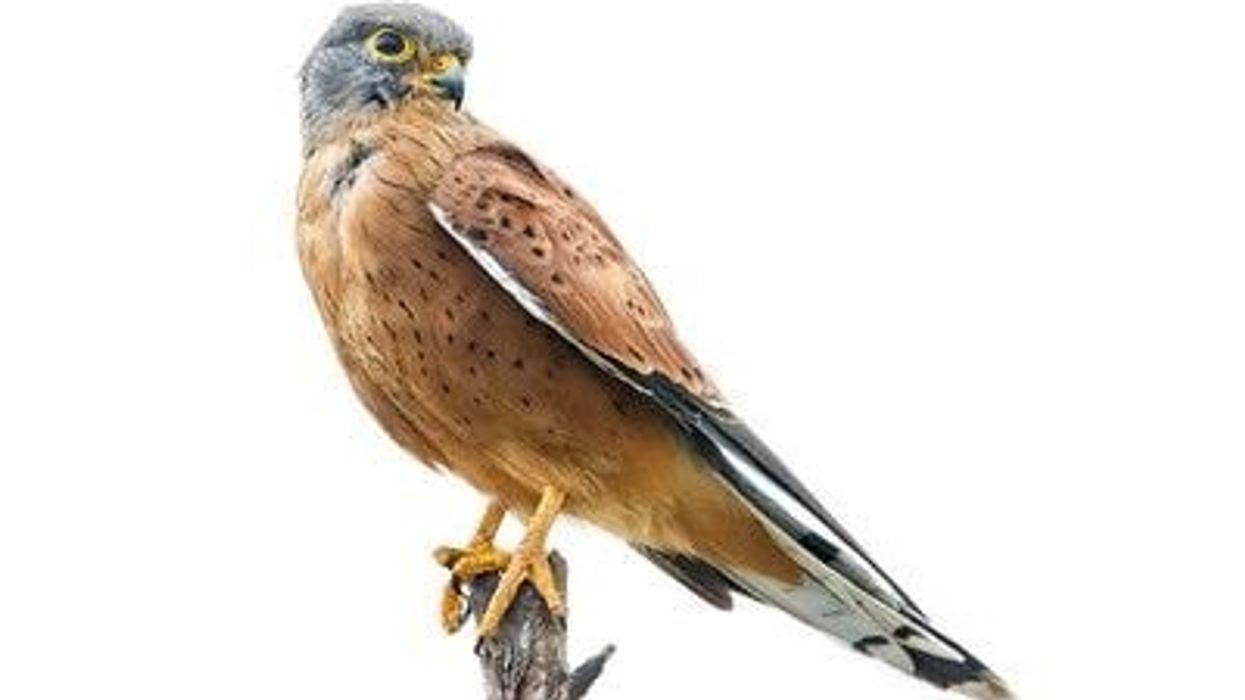Terns are a common group of birds that are seen all over the world. One of the most striking species among this family of birds has to be the black tern (Chlidonias niger).
Just by the bird's name, you already know that this species is covered with black or dark-gray plumage. These birds can be easily spotted in North America, Asia, and the coastal areas of Africa and South America.
In North America, the New York and Hawaii black tern population has been quite constant. During the winter months, the black tern makes the journey of migration to warmer places.
It is one of the many bird species that like to eat insects and small fish. These birds build nests and live in areas of thick vegetation such as in marshes and bogs.
Freshwater marshes form the favorite breeding grounds of this species. However, in South America and Africa, these birds may choose to live near marine or coastal environments.
The colonies formed by these birds can have hundreds or even thousands of individuals. The population of North American black terns has faced problems because of habitat loss, but conservation is underway.
Want to know more about the species? Keep reading to learn important black Tern facts. Also, check out our articles on kestrel birds and barn owls.
Black Tern Interesting Facts
What type of animal is a black tern?
The black tern is a type of bird belonging to the Chlidonias genus.
What class of animal does a black tern belong to?
The black tern belongs to the class Aves, to the order Charadriiformes, family Laridae.
How many black terns are there in the world?
In 2015, the global population of black terns was thought to be 800,000 to 1,750,000 individuals. Around 149,000 to 308,000 mature individuals were thought to be present in Europe. The North American population of mature black terns is estimated to be 100,000 to 500,000.
Where does a black tern live?
Black terns are present in North America, Europe, and Asia. During migration, the North American population of black terns migrate towards warmer South American regions, especially to Peru and Chile. A huge population of this species of bird is said to live in New York.
What is a black tern's habitat?
A black tern's habitat is usually in areas such as inland marshes, lakes, sloughs, and open water. These birds love water, so it prefers to find a habitat that is near a freshwater environment.
Another thing to note about black terns is their preference for habitat with cattails. These birds also prefer a habitat with shallow water so that they can catch small fish or flying insects. A black tern bird is only seen on coasts during the migration season.
However, in their native residence, these birds prefer living in marsh areas, especially during the breeding season. Sometimes in the winter months, these birds may flock to the coasts of northern South America.
Who do black terns live with?
Black terns are social birds and are known to live in flocks or colonies. These birds have nests that are quite close to marsh areas and are often seen hovering or flying over the land with their flock.
How long does a black tern live?
The maximum lifespan of a black tern is around 20 years. However, most black terns will only live to an average age of eight to 10 years.
How do they reproduce?
The black tern has an elaborate mating ritual that includes a flight display from males. Male birds of this species carry fish for the female birds as an act of courtship. Freshwater marshes are the choice of habitat when it comes to nesting.
Black terns prefer nesting grounds that are covered with vegetation to deter predators. Black terns are known for nesting over marsh areas, often on just vegetation, and the eggs also remain damp because of the marsh water.
This species may even nest beside lakes or other water bodies. Breeding in North America mainly takes place in the central states. While in the south, the range is more towards coastal areas.
Black terns aren't great at nesting, and the nest is often destroyed if there is a strong wind. The breeding season for these birds is from May to June, but the season may vary according to the geographical location of the black tern.
Female birds lay around two to three eggs in a single season, and incubation lasts for 22 days. The survival rate of black tern chicks is pretty low because of the presence of predators.
After the chicks hatch, a black tern juvenile takes around 24 days to learn to fly. It takes almost three years for a black tern to become fully mature.
What is their conservation status?
According to the International Union for Conservation of Nature Red List, the current black tern IUCN status is of Least Concern. However, black tern populations have been rapidly declining, especially among the North American birds.
Bird conservation and strict rules have been implemented to protect the birds present in North America. A significant population of birds has also been affected by the flooding of breeding grounds. These birds aren't currently endangered in any other place.
Black Tern Fun Facts
What do black terns look like?
While learning about the black tern, the most important thing to know is about the bird's appearance. Their wings as well as the upper part of the bird, including the black tern skull area, are covered in black or charcoal-gray plumage.
It sets the bird apart from other terns that have a lighter plumage. Their wings also have a lighter color compared to the bird's head. In the breeding season, a black tern has a darker breeding plumage, while the black tern winter plumage is a little lighter.
Young black terns are much paler compared to the breeding adults. These birds have sleek and slender bodies that look even thinner when it is in flight.
A black tern has a small tail that is notched. A molting black tern has a paler cap compared to a breeding black tern. Also, a black tern has a short bill with short legs, and the color of its bill is black and slightly curved at the front.
Young birds have a white collar around their neck. In adults, the face can also have white spotting.

How cute are they?
Rather than being classified as cute, a black tern is a classy bird with its beautiful black and gray plumage.
How do they communicate?
Like other birds, calls are quite important for the black tern species. The common calls include high-pitched 'kik' and the 'kyew', 'kyew-dik', or 'kyew-ki-dik' calls made by nesting birds.
How big is a black tern?
The size of black terns ranges between 9.1-14.2 in (23-36 cm). The size of this species falls between that of a crow and a robin. It is very similar when you compare its size to a common tern that grows to an average length of 12–14 in (31–35 cm).
How fast can a black tern fly?
The average black tern in flight speed is around 19 mph (30 kph). Apart from when they are migrating, this bird species can usually be seen moving through vegetation in search of insects and fish. The flight of a black tern is described as erratic and buoyant.
How much does a black tern weigh?
The average weight of a black tern is around 1.8-2.1 oz (50-60 g).
What are the male and female names of the species?
There are no separate and distinct male and female names for this bird species.
What would you call a baby black tern?
A baby black tern is called a chick.
What do they eat?
The black tern is mainly known for eating insects found on the water's surface or inside vegetation. These birds search all over the vegetation with their short bill to find the insects. These birds love damselflies, dragonflies, and the larvae of insects.
It will also feed on mollusks and small fish found in marshes. Anchovies and silversides are common fish eaten by black terns. Apart from fish, this bird also feeds on amphibians like frogs and lizards that are available in its habitat.
Are they aggressive?
These birds aren't usually aggressive, but they may dart toward an intruder if it is entering their territory. Other than that, a black tern is also known for chasing minnows. However, humans should try to stay away from the territory of a black tern as this bird can potentially attack them.
Would they make a good pet?
As wild birds, it is better to leave the black tern alone rather than make it your pet. Moreover, it is often illegal to keep wild birds as pets because it harms the ecosystem of wildlife.
Did you know...
A white-winged tern and a whiskered tern look similar to a black tern. These birds can be differentiated by their different plumages. All three birds are called marsh terns as these birds prefer to inhabit marsh areas.
The dwindling number of black terns may increase the harmful insects that black terns usually eat in the ecosystem.
Like other birds, black terns will also feel the perils of climate change. As migratory birds, black terns may face problems regarding their habitat as well as their migratory routes.
A black-capped tern, a black-fronted tern, a black-headed tern, and a black-naped tern aren't the same as a black tern.
How big is a flock of black terns?
Flocks of black terns usually contain 100 or more individuals. Occasionally the numbers can even go up to tens of thousands. The black tern breeding also takes place in colonies. Large flocks or groups of black terns are known to have deafening sounds.
Are black terns territorial?
Black terns can get territorial during the breeding season to defend the small territory that surrounds the nest. Many black tern pairs partake in nesting quite close to each other. During the nesting season, there can be 10 to 50 nests in marshes or beside the lakes.
Here at Kidadl, we have carefully created lots of interesting family-friendly animal facts for everyone to discover! Learn more about some other birds including ringneck dove, or wood thrush.
You can even occupy yourself at home by drawing one on our Black tern coloring pages.










